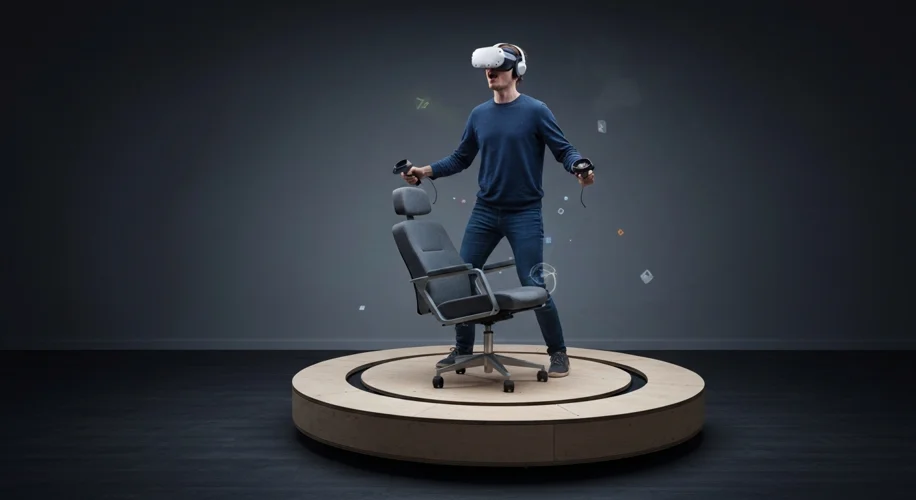Alright, so you’re into VR, right? You’ve probably tried out a few games or experiences, and maybe you’ve hit that wall where simple joystick movement just doesn’t cut it anymore. You want to really walk around in those digital worlds. I get it. That’s exactly why I’ve been diving deep into the DIY VR treadmill scene.
Imagine this: instead of thumbstick wiggling, you’re actually taking steps, turning naturally, and exploring virtual spaces with your own feet. It’s a whole new level of immersion, and the best part? You can build one yourself. Inspired by a bunch of awesome projects and tutorials out there, I’ve been piecing together how you can create your own VR walking device.
What exactly is a VR treadmill? Think of it as a platform, often with a low-friction surface, that allows you to walk or run in place. Sensors track your movement, translating your real-world steps into virtual ones. This bypasses the often jarring experience of artificial locomotion in VR and makes you feel genuinely present in the game.
So, how do you actually build one?
Most DIY treadmills fall into a few categories. You’ve got the saucer-shaped platforms with swivel chairs, which are pretty common and offer a good balance of stability and freedom of movement. Then there are the more complex, free-standing setups that might involve a harness or a more elaborate frame. For a beginner, the saucer-and-chair setup is usually the most accessible.
What kind of stuff do you need?
At its core, you’ll need:
- A sturdy base: Something like a large circular piece of plywood or MDF can work. You want it to be smooth and durable.
- A low-friction surface: This is key. Think laminate flooring, a smooth plastic sheet, or even specialized low-friction mats. The goal is to make your feet slide easily so you can pivot without lifting or dragging.
- A swivel chair or stool: This is your main pivot point. It needs to be comfortable and stable enough to sit on while you’re moving around.
- Tracking integration: This is where it gets a bit more technical. You’ll need to think about how your VR headset’s tracking system will interact with your movements. Some setups use external sensors, while others rely on the headset’s built-in tracking. You might also need something to help calibrate your movement space.
- Safety first! Seriously, this is crucial. Make sure your setup is stable. You don’t want to fall over while you’re immersed in a virtual dragon battle. Consider adding safety rails or straps if you’re going for a more advanced build.
The Software Side
Getting the software to play nice is just as important. You’ll likely need to explore third-party software that translates your physical movements into game inputs. Tools like OpenVR Input Emulator or custom scripts can help map your directional inputs from your treadmill setup. It can take some tweaking to get it feeling just right, but the payoff is huge.
Building a DIY VR treadmill isn’t exactly a weekend project for everyone, but it’s incredibly rewarding. It’s a fantastic way to combine your love for VR with a hands-on engineering challenge. Plus, imagine the bragging rights when you tell your friends you built your own immersive VR locomotion system!
If you’ve ever thought about taking your VR experience to the next level, a DIY treadmill project might just be your ticket. It’s a journey into deeper immersion, one step at a time.

